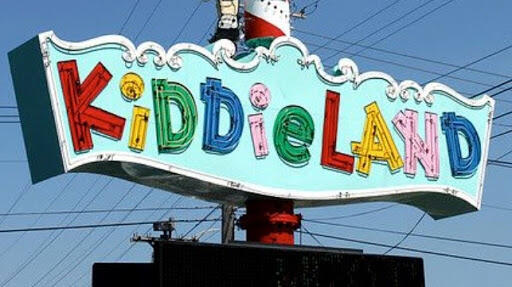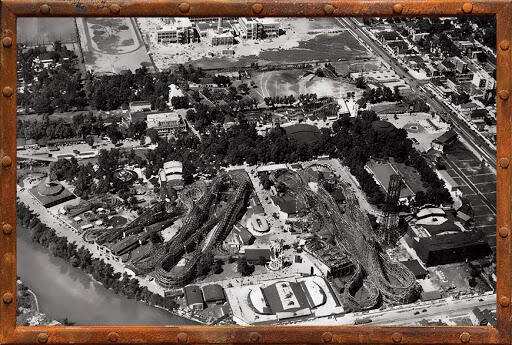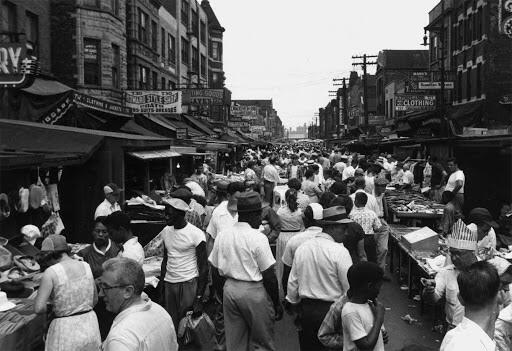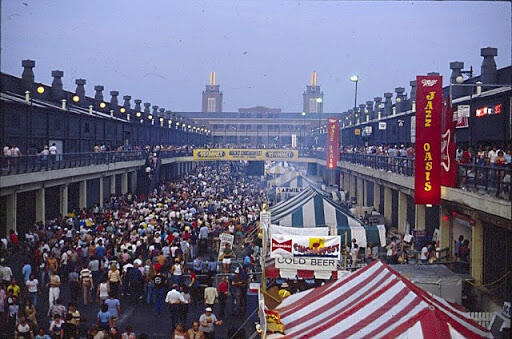Four of Chicagoland’s Greatest Lost Regional Attractions

With society reopening, there’s no shortage of things to do this summer in Chicagoland. But as with anything else, entertainment options evolve over time. Let’s take a look at four of the most popular and iconic attractions in Chicago history that are no longer with us and what happened to them.
Kiddieland

craigslostchicago.com
The beloved Kiddieland amusement park at North and First avenues in Melrose Park is featured in countless memories of millions of Chicagoans. The park had opened in 1929 with only pony rides for children, which owner Arthur Fritz offered to weary parents battling the Great Depression. He soon added go-karts and by the late 1930s it was well on its way to becoming a major amusement park.
It continued to grow through the decades, but by 2009 it would close due to a dispute between the park owners and the park’s landlord. This video captures some of the park in its final season. Rides were spun off to other parks, museums, or sold to private owners. The famous Little Dipper roller coaster was taken in by Six Flags Great America in Gurnee. The site of the park quickly became a Costco, but the iconic Kiddieland entrance sign can be seen in the parking lot of the Melrose Park Public Library.
Riverview Park

Chicago History Museum
While Kiddieland was an anchor as the western suburbs boomed in the mid-20th Century, its rise followed a similar entertainment giant in the Roscoe Village neighborhood of the city: Riverview Park. Situated on Western Avenue just south of Lane Tech College Prep, Riverview Park opened in 1904 and quickly engaged the working class by keeping admission fees very low and having riders pay separately for most rides. It quickly became a local institution and by the 1950s was marketing itself as the largest amusement park in the United States.
The most popular ride out of around 120 was “The Bobs” roller coaster, although even this was not spared from the park’s demolition in 1968. Just one ride remains in existence, a carousel found at Six Flags Over Georgia. The park’s site is now a police station, DeVry University facility, and strip mall including a Jewel and Mariano’s. While only the oldest generations have living memory of the park at this point, it remains one of the most significant attractions in the city’s history.
Maxwell Street Market

Maxwell Street Foundation
No commercial center broke as many ethnic, racial, and socioeconomic barriers as Chicago’s famous Maxwell Street Market, which has been held for well over a century to the southwest of downtown. Founded by Jewish immigrants in the late 1800s, Maxwell St became an incredibly diverse hub in terms of shoppers, merchants, and goods. Immigrant entrepreneurs flocked to the market as an early and quick means to success. Maxwell was even sometimes referred to as the “Ellis Island of the Midwest.” In true Chicago fashion, mob-affiliated “spotholders” were known to shake down merchants looking to hold the most prized vendor locations.
Numerous events in the late 20th Century squeezed the market’s operations as the area developed. Most notably, in 1994 it was booted off its original site near Halsted and Roosevelt to allow UIC to build a southward extension of its campus. It can now be found at 800 S Jefferson St on the first and third Sundays of the month. It continues to feature “an eclectic mix of handmade crafts, resale housewares and clothing, live music, family fun, and some of the best street food in Chicago.”
ChicagoFest

Sarah Long/Facebook
Navy Pier wasn’t always a tourist mecca. In fact, after UIC moved out in 1965, it was underutilized for years. However, buzz arrived in 1978 with ChicagoFest, a new two-week music festival based on Milwaukee’s Summerfest. It featured an incredible 16 stages and over 600 artist performances while costing only $4 at the gate, or $16 in 2021 dollars. Some of the biggest names to have played there include Frank Sinatra, The Beach Boys, Journey, Cheap Trick, Aretha Franklin, Muddy Waters, The Doobie Brothers, and Willie Nelson.
In a pre-Lollapalooza era where music festivals were far less common, ChicagoFest was an instant hit. It was estimated that around 100,000 visitors arrived each day for a total attendance of over 1,000,000 for the festival. It encouraged the city to introduce more events including the Taste of Chicago which continues today. ChicagoFest, however, was in trouble by 1983, embroiled in a political controversy that led to reduced attendance. The final ChicagoFest was held that year at Soldier Field before being cancelled by new mayor Harold Washington. While the incredible dollar value and upstart feel of ChicagoFest may be gone for good, the event paved the way for the Taste and Lollapalooza to become beloved annual traditions and helped wet the city’s appetite for more music festivals.

